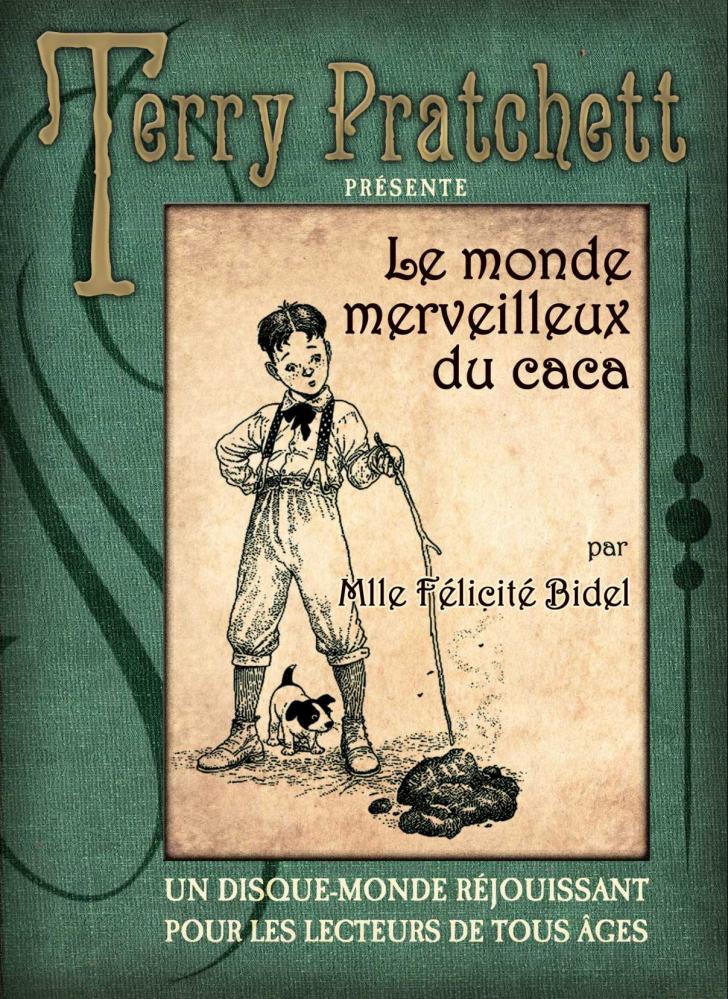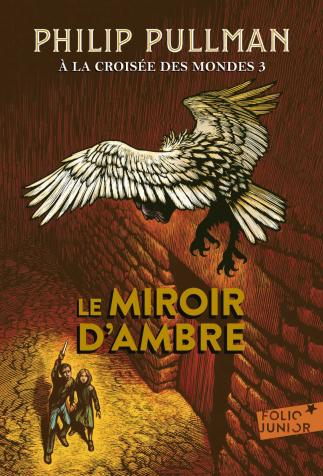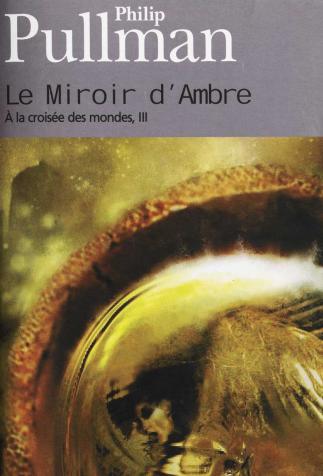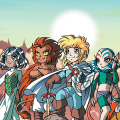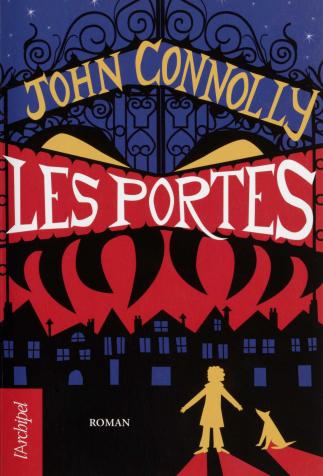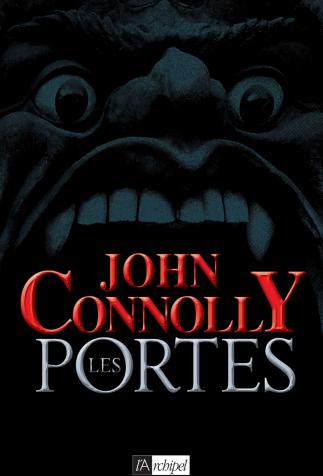Trans-Generational Tales
Fantasy appeals to children and adults alike. Sometimes the same books, games and films are enjoyed by young and and old for different reasons. The genre has reconfigured its audience by transcending generational barriers.
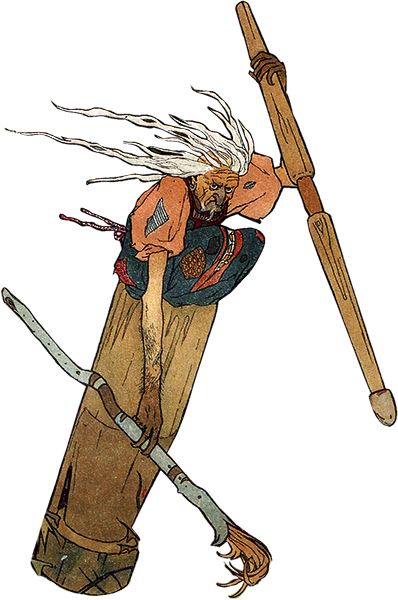
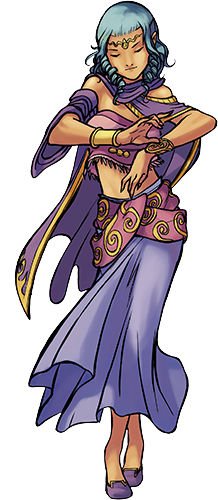
One of fantasy’s specificities is to appeal to both children and adults. The genre’s history is filled with authors who have written alternately for both younger and older readers.
As far back as the Victorian era, George MacDonald, the author of Phantastes: A Faerie Romance for Men and Women, would go on to write the children’s novel The Princess and the Goblin (1872) and its sequel (1873). In the contemporary era, Terry Pratchett’s oeuvre ranges from the The Nome Trilogy (1989-1990) to The World of Poo (2012), while Neil Gaiman writes everything from comical tales like Fortunately, the Milk (2013) to Gothic ones like Coraline (2002), The Graveyard Book (2008) and The Sleeper and the Spindle (with illustrations by Chris Riddell, 2014). This long-standing, venerable tradition has no equivalent in other genres.
Of course the same duality can be found in Tolkien, who, after The Hobbit (1937) struggled not to be labelled strictly as a children’s-book, as well as in C.S. Lewis, who chose, on the contrary, to focus on younger readers in order to edify them with his Chronicles of Narnia (1950-1956).
Reconciling Generations
At the turn of this century, the Harry Potter (J.K. Rowling, 1997-2007) phenomenon was a game-changer: it led to a radical restructuring of speculative genres in favor of the “juvenile” sector, whose potential had just been revealed. Although the first volume was specifically addressed to readers aged 9, Harry Potter was enjoyed (in print, and later on screen) by people far outside the original target audience. Until that point, the shift had more often been seen in the opposite direction. Popular classics – like novels by Alexandre Dumas, Victor Hugo, and Robert Louis Stevenson –“trickled down” towards a younger readership with each successive abridgement; the phenomenon was well known. But this time, adults were taking hold of a book that hadn’t been meant for them – and they were doing so more and more unabashedly with each passing volume.
All at once, the retreat into childish tastes that had probably already existed as a hidden, guilty pleasure could now be flaunted in public. The very high quality of writing in some books also played a large part in this legitimation. That is clearly the case for Philip Pullman’s His Dark Materials (1995-2000) and Frances Hardinge’s The Lie Tree (2015), as well as Patrick Ness’s A Monster Calls (2011). In fact, The Amber Spyglass – the final volume in Pullman’s trilogy – and Hardinge’s novel became the first two “children’s books” to win major British literary prizes in the overall category).
Pure entertainment-value is no stranger to the sector’s development either. At a time when parents and educators are thrilled if young people read anything at all, it’s remarkable that mothers and daughters could share their pleasure in Twilight (Stephenie Meyer, 4 volumes, 2005-2008). The popular paranormal-romance sub-genre has a trans-generational fan base.
Emergent Audiences
Books, films, games: the various media have gone with the flow of this evolution, which has placed a “youthful” audience with ever fuzzier borders – from pre-teens (who are getting younger and younger) to “young adults” (who are getting older and older) – at the heart of cultural habits. As the hot new target, plenty of books, films and games are being aimed directly at them.
So Peter Jackson’s successive trilogies – The Lord of the Rings followed by The Hobbit –were adapted from books by Tolkien that were not meant for the same age group. But the trilogies aimed for a shared audience, so The Lord of the Rings was enlivened a bit and The Hobbit dragged out, in order to appeal to the same teen/young adult viewers, the same groups Marvel’s blockbusters are made for.
The huge game market, which has entered a new era since the generalization of high-speed internet, has seen its audience grow larger and more diverse as successive generations of gamers now coexist. Harry Potter’s first fans are now in their early 30s, and they have never disavowed their childhood fervor.
Desperately Seeking the “Harry Potter for Adults”
So fantasy today is largely a children’s genre that is also enjoyed by adults, a veritable laboratory for crossover productions. Adult fantasy, which hopes to play its cards right, has been seeking an elusive “Harry Potter for adults.” That recurrent slogan was used, for instance, in the ad campaign for Susanna Clarke’s Jonathan Strange & Mr Norrell (2004), which is pretty much entirely different from Rowling’s books, aside for an element of learning magic.
Lev Grossman’s The Magicians trilogy (2009-2015), which was adapted into a TV series (2015-2020), chose to explicitly revisit children’s fantasy’s trope. Since childhood, the trilogy’s hero has been particularly attached to The Chronicles of Fillory (a clear nod to Narnia). Like Harry Potter, when he finds a portal to another world, he winds up in a school of wizardry that is isolated from the outside world by supernatural protective mechanisms. But as Grossman’s heroes reach adulthood, they try drugs and alcohol, as well as experiencing the joys and sorrows of sexuality.
German author Cornelia Funke’s Mirrorworld series (since 2010) features two brothers. Like their father before them, the young men lose themselves in the world on the other side of the mirror.
Taking that logic to an extreme, John Connolly’s novels The Book of Lost Things (2006) and The Gates (2009), which also pay tribute to motifs that intertwine enchantment and childhood, were published in France with two different covers: one aimed at younger readers and the other at older ones. In Britain, Harry Potter got the same treatment, with a dark, more grown-up cover to appeal to adult readers as early as 1998!
